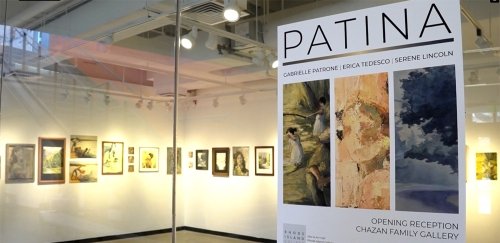Learning Outcomes

Art Department Learning Outcomes
Studio Art Programs
Upon completion of the major, graduates must have attained…
- A developed visual sensitivity,
- The technical skills, perceptual development, and understanding of principles of visual organization sufficient to achieve basic visual communication and expression in one or more media,
- The ability to make workable connections between concept and media,
- Some familiarity with the works and intentions of major artists/designers and movements of the past and the present, both in the Western and non-Western worlds, and
- An understanding the nature of contemporary thinking on art and design, and have gained at least a rudimentary discernment of quality in design projects and works of art.
- As per the National Association of Schools of Art & Design (NASAD) Accrediting Agency Handbook
Art Education Program
Upon completion of this major, graduates will have met the mission and vision of the Feinstein School of Education and Human Development (FSEHD). To this end they…
- Demonstrate current expertise in their discipline;
- integrate ongoing research in their professional settings, resulting in innovative and culturally responsive practices;
- engage in ongoing development of critical reflection skills in themselves and their constituents;
- use professional standards and ethical frameworks to inform decision making;
- collaborate with and advocate for all stakeholders, including students, clients, families, and colleagues;
- exercise agency in the context of their professional communities.
Art History Program
Upon completion of the major, graduates must have attained…
- a general knowledge of the monuments and principal artists of all major art periods of the past, including a broad understanding of the art of the twentieth century and acquaintance with the art history of non-Western cultures,
- a general knowledge of world history,
- knowledge of the tools and techniques of scholarship,
- functional knowledge of the creative process and
- adequate mastery of at least one foreign language to support research through the reading of primary source materials, as is appropriate to a student's areas of interest.
As per the National Association of Schools of Art & Design (NASAD) Accrediting Agency Handbook
